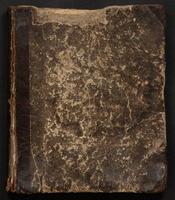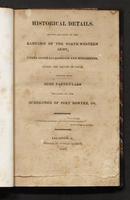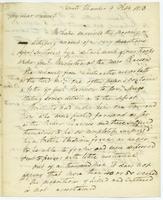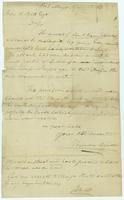Old Northwest 1813
Battle of Frenchtown — River Raisin Massacre — Siege of Ft. Meigs — Second Siege at Fort Meigs — Battle of Fort Stephenson
In 1813, conflict in the Old Northwest began where it had left off the previous fall -- in the Detroit frontier on the eastern edge of Lake Erie. General William Henry Harrison’s army was marching westward and a forward group learned of British forces camped at Frenchtown on the Raisin River. Brigadier General James Winchester, on his own authority, sent a large group of Kentucky militia to raid the British position and seize their supplies. The militia outnumbered the British and successfully took possession of Frenchtown while the British fell back to Fort Amherstburg. Days later Winchester’s regular forces arrived at Frenchtown and set up camp outside the fortifications. Soon after Colonel Henry Procter left Fort Amherstberg with nearly 1,000 men, approximately three-quarters Native American combatants. The British attacked at night, causing great chaos. U.S. troops broke and ran into the woods, and many were hunted down and killed by the Native American fighters. Winchester was captured, stripped, and delivered to Colonel Procter to whom he surrendered the force. Knowing that Harrison’s army was on the move, Procter returned to Fort Amherstberg with his prisoners.
Procter’s forces clashed with Harrison’s army a few months later at Fort Meigs, a ten-acre encampment on the banks of the Maumee River that served as home base for the Western Army. Urged on by Tecumseh, Colonel Procter established a position at Fort Miami, across the river from Fort Miegs, constructed batteries, and began a bombardment of Fort Miegs on May 1. The fort stood up well to the siege, but Harrison knew the British guns needed to be silenced. He sent word to a force of Kentucky militia led by Brigadier General Green Clay en route to Fort Miegs. Clay dispatched Lieutenant Colonel William Dudley to destroy the British guns. The militia successfully overran the British guns, but disobeyed orders and pursued the British into the surrounding woods where they were ambushed by Native American forces. Of 800 men, more than half were killed and the majority of survivors were taken prisoner. The British continued the siege until May 9, eventually withdrawing when Native American forces dispersed and the supply of gun powder ran low.
Procter returned to Fort Miegs once more in July of 1813, surrounding the fort for nearly a week, but without the proper vessels to bring in large guns by river, the effort was essentially dead on arrival. Continuing his troubled efforts to take advantage of British control of Lake Erie and take control of its shores, Procter sailed to Sandusky Bay and up the Sandusky River to attack Fort Stephenson, a smallish outpost of Harrison’s army held by about 150 men. Harrison feared such an attack and sent out orders to abandon the fort. The orders arrived too late, but Major George Croghan and his forces successfully defended the fort despite being outnumbered nearly 5 to 1. Procter’s forces withdrew the next day, ending a string of failures that seriously undermined confidence in the leadership of General Henry Procter.
Related Items

Recruiting militia
Military invitation. Associations as well as individuals have desired to join the North Western army (as volunteers to serve for a short period) ... Chillicothe, Ohio, 1813.
This recruiting broadside seeks “a body of mounted volunteers, to serve not exceeding thirty-five or forty days…” The short enlistment periods of many miltia members were an ongoing challenge to the war effort.

Orderly book of the Lexington Light Infantry
Orderly book. August 15, 1812 – February 11, 1813.
An orderly book is a record book kept by a military company in which general and regimental orders are recorded. This orderly book belonged to a company that fought at the River Raisin, where their comander Levi Luther Todd was killed.

General Winchester defends himself
James Winchester. Historical details having relation to the campaign of the north-western army, under Generals Harrison and Winchester, during the winter of 1812-13. Lexington, Ky.: Printed by Worsley & Smith, 1818.
Robert McAfee’s History of the Late War in the Western Country, published in 1816, was critical of Winchester’s abilities as a general. This book brings together ten newspaper articles by Winchester, originally published in the Washington National Intelligencer, in which he defends his record. A variety of affidavits and supporting documents supporting Winchester’s character and actions are also included. Read General Winchester's dispatch book from the earlier in the war.

News of the River Raisin defeat
Letter from Senator James Bayard to Samuel Bayard. February 9, 1813
Written from the Senate Chambers, this letter from Senator James Bayard of Delaware gave news of the defeat at the River Raisin: “We have received this morning a distressing account of a very disasterous defeat sustained by a detachment of our troops under Genl. Winchester at the River Raisin.”

Letter from an army officer
Letter from William Oliver to John Hooper Piatt. April 13, 1813
Written from Fort Meigs, Oliver’s letter begins: “The arrival of General Harrison was welcomed by discharge of big guns."



